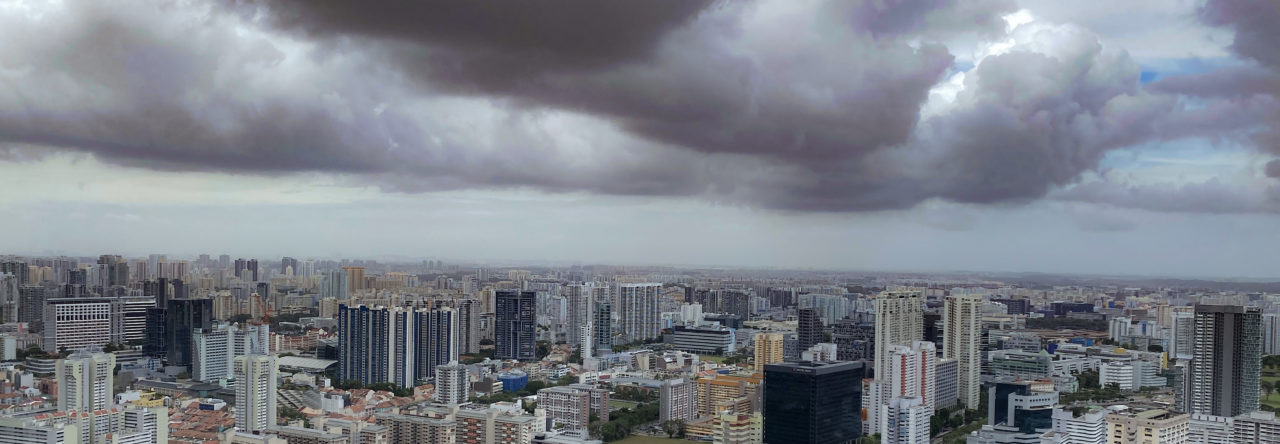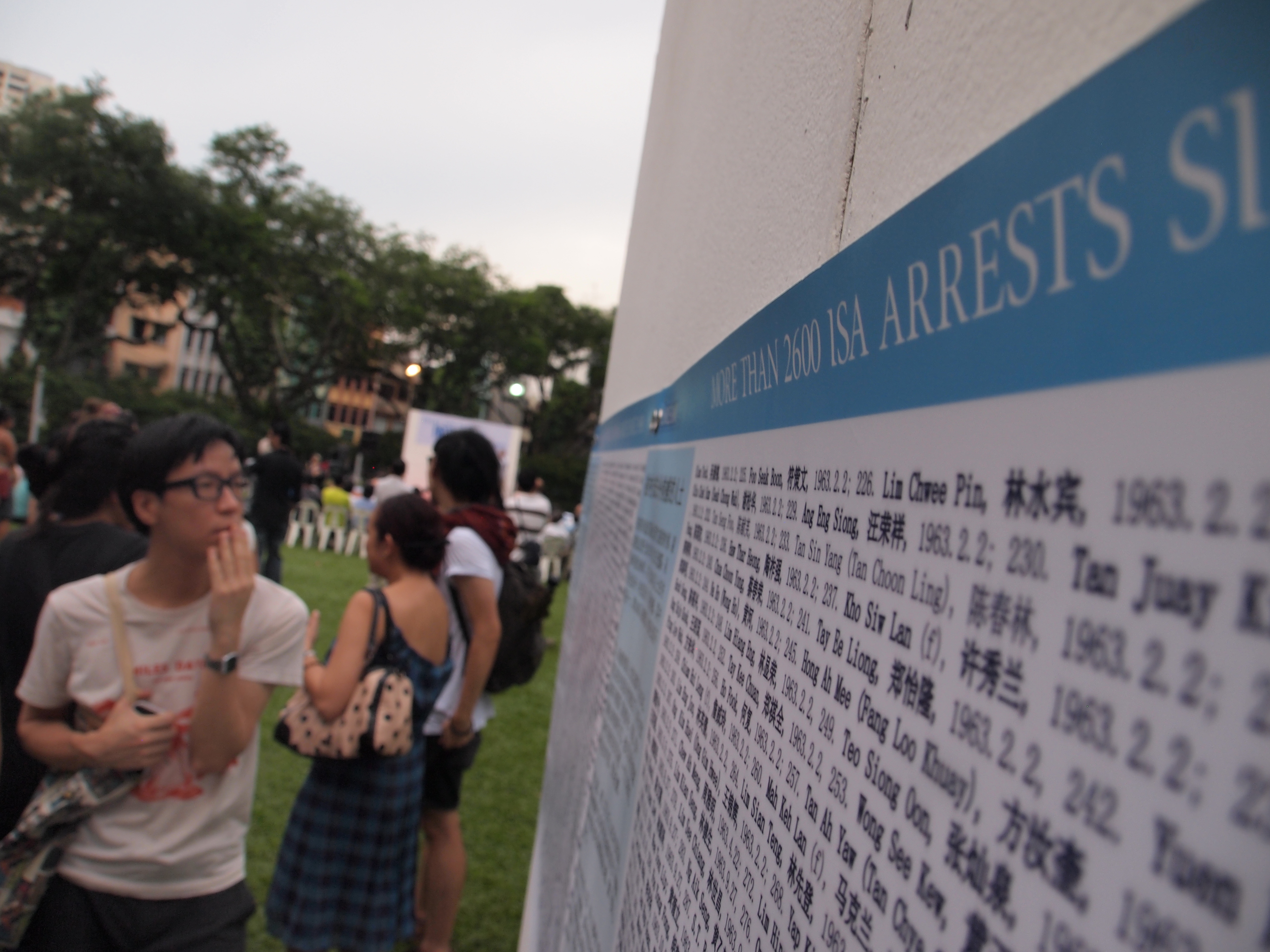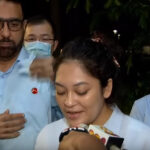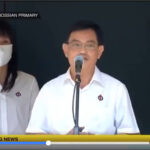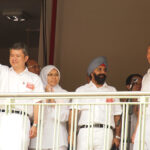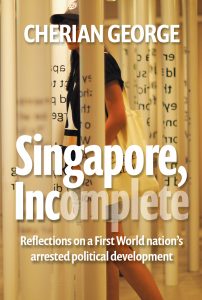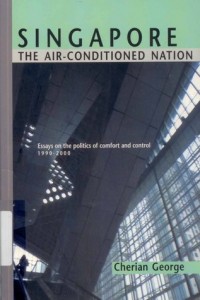Managing civil disobedience
My academic paper on the concept of calibrated coercion was first published as a Working Paper by Asia Research Institute, NUS. You may download the PDF file by clicking here. Below is an article applying these ideas in analysing Chee Soon Juan’s strategy of civil disobedience, published by the Straits Times, 10 October 2005, p. 19. The ensuing exchange with the government is also reproduced below.
THE ‘white elephants’ affair has resulted in a ‘stern warning’ to its unnamed perpetrator. After this case, people will be more careful to check that they do not accidentally flout the law, as the unfortunate Mahout of Buangkok appears to have done.
However, this is unlikely to be the last such case. The stern warning will not deter opposition activists who believe in deliberately breaking the law to make a political point. Their attempt to inject civil disobedience into Singapore’s body politic represents an intriguing challenge to the People’s Action Party’s ideological hold. It calls for deft handling. While thwarting a protest is easy for the authorities, the question is how much political capital they will have to spend in the process.
This is the real power of such campaigns. By deliberately but non-violently flouting laws that they deem unjust, opponents put the authorities in a fix.
The state could choose to close one eye, but this would diminish its authority and probably invite follow-up breaches until these are too large or too flagrant to be ignored. If the state responds with force against a peaceful protest, the activists can still try to claim the moral victory. They may succeed in convincing the wider public that the law in question – and the state’s power in general – is neither just nor moral, but instead backed by sheer force.
Thus, campaigns of civil disobedience test a state’s moral legitimacy, revealing whether its rule is based mainly on consent or on coercion.
Dr Chee Soon Juan has been dabbling with this strategy for some years, at least since 1998, when he spoke in public without a permit and landed up in prison. His new book, The Power Of Courage, promotes non-violent civil disobedience as an opposition strategy in Singapore.
The Government has responded that the rule of law must be respected. Home Affairs Minister Wong Kan Seng said that wilful law-breaking ‘regardless of whether you think it is a silly law or not … does violence to the rule of law’, even if the actions are peaceful.
While the principle of zero tolerance for law-breaking is straightforward, applying it will be a challenge. Civil disobedience will test a key element of PAP governance: its acumen in calibrating its use of force against political challengers, such that opponents are neutralised with minimum collateral damage.
This is not to deny the other – and much better-understood – sources of the PAP’s strength, namely its outstanding record in delivering the goods, its internal discipline and its ability to win genuine freely-given loyalty from the majority of Singaporeans.
But every state, by definition, also comprises instruments of force. And the intelligent use of force is no less a dimension of good governance than, say, an efficient bureaucracy or long-term urban planning.
Its calibrated approach to coercion may be one of the least appreciated of the PAP’s many skills. Indeed, stating it this way will probably provoke some incredulity. After all, even some of the PAP’s most ardent supporters think it is guilty of occasional overkill. PAP leaders themselves are not coy about their macho side. Mr Lee Kuan Yew talks of knuckledusters and nation-building with equal aplomb. If the PAP were to develop and market a computer game, it would be a cross between SimCity and Street Fighter.
Self-restraint
IMAGE aside, however, the facts show a government increasingly aware of the need to exercise self-restraint in its use of force. Yes, it has an array of repressive tools within easy reach. But, compared with other states that possess similar tools and are controlled by similarly strong-willed leaders, Singapore’s Government has been relatively judicious and sophisticated in their use.
The spectrum of coercive tools available to an authoritarian regime today ranges from political murders and disappearances, and torture and imprisonment without trial, to criminal prosecution, civil action, the banning of organisations, sabotaging opponents’ means of earning a living and character attacks through state-controlled media.
The most extreme of these tools have never been used in Singapore. And it is noteworthy that detention without trial, under the Internal Security Act, was used frequently in the 1960s and 1970s but has not been applied to non-violent political opponents in almost two decades.
As for criminal prosecutions, most of these have not involved jail terms. Dr Chee went to prison because he would not pay a fine. The state’s weapon of choice – defamation civil suits – similarly does not involve incarceration, though it can be devastating financially.
Some may argue that these distinctions are academic, as the PAP’s calibrated coercion is still coercive enough to neutralise the opposition. On the one hand, that is precisely the point being argued here: The PAP has developed into an art form the ability to suppress challenges with a fraction of the brutality employed by the most ruthless dictatorships, but with an effectiveness that more than matches them.
Still, the difference between physical torture and a lawsuit is hardly insignificant. To claim otherwise – to say that Singapore is like the Soviet Union of the past, or like Zimbabwe today – is to trivialise the suffering of dissidents in some of the most inhumane regimes of the modern era.
Furthermore, different tools have different secondary effects. That is why calibrated coercion is not only more ethical than unbridled repression, but also the smarter option for any regime interested in long-term consolidation rather than short-term plunder.
States that overplay their hand often find the excessive violence backfiring on them. It unleashes a moral outrage that opponents can harness to mobilise a hitherto-inert public behind their cause.
Tipping points
IN THE Philippines, the sight of opposition leader Benigno Aquino Jr, gunned down in cold blood on the tarmac of Manila International Airport in 1983, was the beginning of the end of the Ferdinand Marcos regime.
Indonesia, May 1998: The shooting of four student protesters was the tipping point that turned the Reformasi campaign against then-president Suharto into a full-blown revolution.
Malaysia’s Reformasi got a fillip from sensational images of Datuk Seri Anwar Ibrahim being snatched away under the Internal Security Act and then emerging from custody with a black eye, courtesy of the country’s police chief.
Mr Lee Kuan Yew would later comment that the Mahathir government erred tactically in using the ISA instead of a straightforward criminal charge – a rare hint that the calibration of coercion is a conscious policy, even if never enunciated.
One of the few political theorists to have analysed the cost of a state’s violence to the state itself was political philosopher Hannah Arendt.
In her pithy treatise On Violence, she rejected Mao Zedong’s oft-quoted dictum by arguing that while violence can flow from the barrel of a gun, power cannot.
Power corresponds to the human ability to act in concert; it belongs to a group and exists only as long as the group coheres.
‘Single men without others to support them never have enough power to use violence successfully,’ she wrote.
‘Even the totalitarian ruler, whose chief instrument of rule is torture, needs a power basis – the secret police and its net of informers … Where commands are no longer obeyed, the means of violence are of no use … Everything depends on the power behind the violence.’
Power is sustained by legitimacy, and legitimacy is what’s lost when violence is misapplied. ‘To substitute violence for power can bring victory, but the price is very high; for it is not only paid by the vanquished, it is also paid by the victor in terms of his own power,’ she said.
Therefore, even though violence, power and authority often appear together, they are not the same. Indeed, she added: ‘Power and violence are opposites; where one rules absolutely, the other is absent. Violence appears when power is in jeopardy, but left to its own course it ends in power’s disappearance.’
Arendt thus zoomed in on the counter-intuitive truth that run-of-the-mill dictators have failed to understand. As in so many other areas, the PAP belongs in a different league. It may have wielded mallets to smash assorted flies in the 1960s and 1970s, but since the mid-1980s it has been relatively self-restrained in the use of force.
This is why the Catherine Lim Affair was able to create such a stir in the mid-1990s, and is still talked about 10 years later, despite the fact that she was not arrested, exiled or ‘fixed’. Her books were still published and used as literature texts in government schools, so she was not even punished professionally.
Three decades ago, these less-calibrated means of coercion were more routine. A Singaporean from that period, transported through time to the present day, would be dumbfounded by the notion that the Catherine Lim Affair – which never got nastier than a verbal lashing – could be iconic of PAP intolerance towards dissent. He would have concluded, correctly, that the PAP had changed.
Our time-traveller would be wrong, however, if he assumed that the PAP had undergone a fundamental philosophical conversion towards liberal ideals. As Prime Minister Lee Hsien Loong emphasised at his talk at the Foreign Correspondents Association last Thursday, it has not – and will not.
The change is instead at the level of methodology. By systematically shifting political controls behind the scenes – through legislation covering trade unions, universities, the press, religious groups and the legal profession – the PAP has pre-empted ugly confrontations with institutions that could challenge its authority.
Mixed blessing
THE contemporary scene of calibrated coercion is a mixed blessing for Singaporeans who want more freedom. There is certainly less cause for fear today than in the old days when coercion was more blunt. On the other hand, the PAP’s self-restraint gives its opponents less moral ammunition.
Controls are so seamlessly integrated into the system and coercion is so well calibrated that the average Singaporean can go through much of life without bumping into the hard edges of PAP authoritarianism. This is bad news for pro-democracy activists, who consequently have a tough time reminding Singaporeans that they should care about political liberalisation.
That is where Dr Chee’s strategy of civil disobedience comes in. It is a predictable response to the PAP’s success at calibrated coercion. It involves seeking out laws that may not enjoy great public support, and deliberately flouting them to provoke a forceful response. The use of force will ensure victory to the PAP, but the price of victory, to borrow Arendt’s words, will be ‘paid by the victor in terms of his own power’. The strategy turns the state’s monopoly of force against itself.
Other states have fallen into the trap when those at the top miscalculate, or when their functionaries – especially the police or army – get trigger-happy when putting down peaceful protests. There is little risk of the latter in Singapore, where uniformed services are highly disciplined and under firm civilian direction. The former scenario – political miscalculation – also seems unlikely.
However, it should be noted that a new and less experienced generation of ministers and permanent secretaries is taking charge. For them, there may be an urge to deal with challengers of any sort in the most expeditious manner, and the temptation to get their way through actual or threatened force may be irresistible. The alternative – the use of reason and debate – may seem too slow, too weak, especially when more decisive tools are at one’s fingertips.
The situation, in short, is dynamic. The Government can narrow the opportunities for effective civil disobedience by pro-actively amending regulations that are over-broad and difficult to defend intellectually to the ordinary Singaporean. Until then, the Chees of Singapore will continue to pressure those points in the law. The authorities will not give in; they will say no. But they will have to calibrate carefully how they say no.
The writer is an assistant professor at the School of Communication and Information, Nanyang Technological University, where he researches media and politics. This article is based on an academic paper on calibrated coercion, published in the Asia Research Institute’s working paper series, at www.ari.nus.edu.sg.
